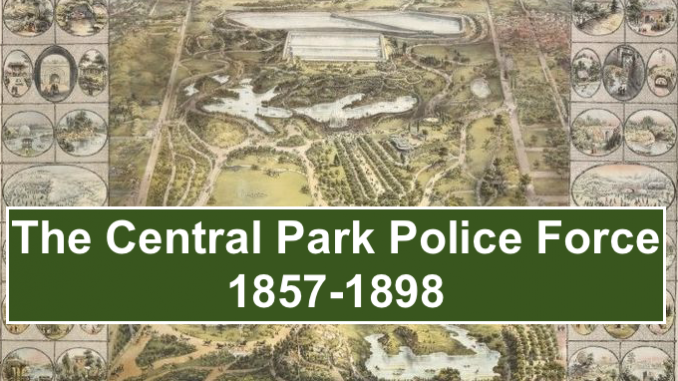
The Grandest Park in the World
In August 1853, the New York State (NYS) Legislature, and the New York City (NYC) Common Council took action on legislation affecting the creation of Central Park. The Common Council approved a resolution authorizing the creation of the Park, and the Legislature acted to expand the original bounds of Central Park. The original NYS bill set the bounds of the Park from 63rd and 100th Streets between Fifth and Eight Avenues. In the same year, while the grounds of Central Park were under construction, the concept the creation of a new police force for the Park, separate from New York City’s (NYC) Municipal Police Department (PD), was raised.
The Need for Policing to Protect the Flora, Fauna, and Visitors of the Park
The Superintendent of Central Park, the Architect Frederick Law Olmsted, paid careful attention to landscape design, planting of native and foreign specimens of plants, shrubs, and trees, and the animals that populated the Park. These animals included native species as well as specimens from Europe and elsewhere such as deer, swans, and English Sparrows (from England, and now considered an invasive species). Tulips, roses, plants, and trees, were acclimating and required the utmost care and protection.
Three years later, in May 1856, Mayor Fernando Wood (1855-58 and 1860-62) appointed Special Police Officers to patrol the Park. The following month, marked the appointment of nineteen men were and they began their duties wearing the same uniforms of the NYC Municipal PD counterparts. The exception was that their cover plate (also referred to by some as a “helmet device”) bore the abbreviation for Central Park Police, “CPP.” For one year, the men served without pay. Complicating matters, the force reported to the NYC Municipal PD as well as the Park’s Board of Commissioners.
In 1857, the Board of Park Commissioners voted to create a “regularly established” police force “to secure the property…from degradation and destruction.” The force was formally known as the Central Park Police. The Bennett House was used by the Captain of Police and the “Central Park Police Station,” by the police department. The Station was located at Fifth Avenue and Seventy-ninth Street. In October 1857, a building referred to as the “Geary House” was mentioned as being assigned for use by the police. In September 1858, the Station is referred to as the “former” police station. At this time, it is not known is the Station and the Geary House are one in the same. It is likely that they moved from the Station to the Geary House.
In the same year, NYC’s Municipal Police force was abolished and replaced by the Metropolitan Police District. The District, under NYS control, covered not only Manhattan Island. In July 1857, the Park Commissioners received a verbal commitment from the Metropolitan Police Commissioners to provide manpower for the Park. However, Mayor Wood refused to allow NYC funds to pay for Central Park Police salaries, or other expenses. After negotiations with Park Commissioners, Mayor Wood agreed to permit the Park Commissioners to hire men from within their own, existing, civilian staff but not from the Metropolitan force.
In 1857, the the title of “Park Keeper” was created for the men of the Park Police force. The Park Police remained without a law enforcement leader until 1858, when the men of the force began to report to a Metropolitan PD Inspector. Prior to this arrangement, Mr. Olmsted led the force. In addition to the Park Keepers, Gate Keepers were assigned to gates of the Park and were the first line of vigilance to ensure that visitors followed the Park rules.
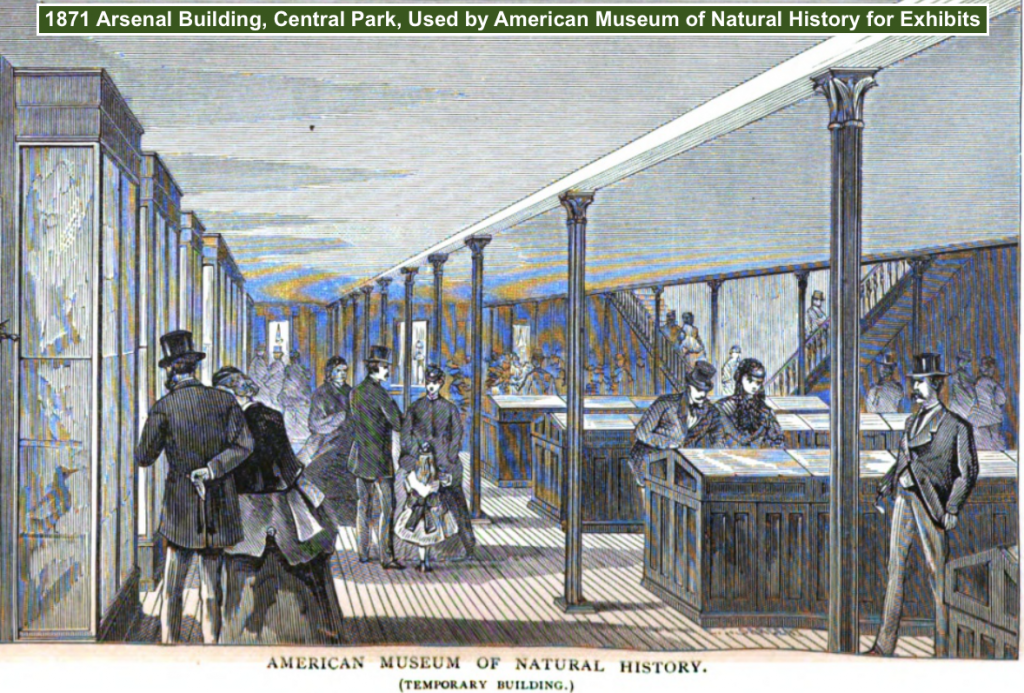
Caption: Exhibits of the American Museum of Natural History, The Arsenal, Central Park
In 1856, a telegraph line was run from police headquarters, 300 Mulberry Street, to the Arsenal where the park police had their offices. In 1857 the Museum of Natural History used the Arsenal building for exhibitions. The police maintained a less than accommodating area in basement of Arsenal building where their offices, locker rooms, etc. were located
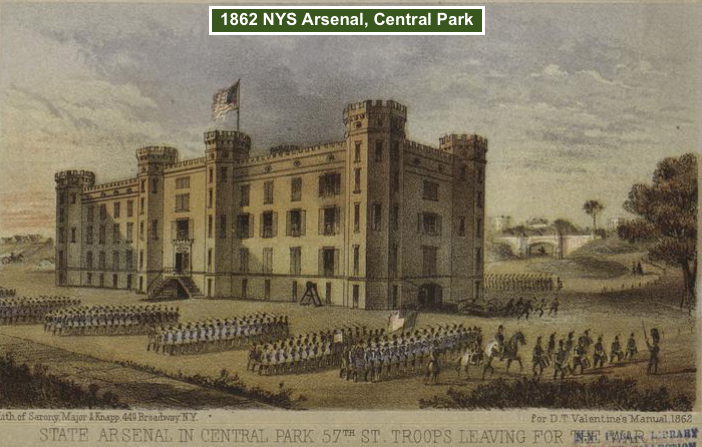
In February 1858, the Special Police was disbanded and twenty-four Park Keepers were appointed and paid $1.50 per day under the direction of Superintendent Olmsted. The following month, March 1858, marked the adoption of Park Ordinances governing the use of the Park by visitors. The ranks of Sergeants (equivalent to today’s rank of Lieutenant) and Captain existed in the Police Force.
In January 1859, the Board of Park Commissioners wrote a Memorandum to the NYS Legislature asking for amendments to laws permitting the Commissioners to appoint men to the Park Police Force.
The Tammany “Tiger” Gets Its Claws Into the Park
The infamously corrupt William “Boss” Tweed and the Democratic Party’s corrupt institution, Tammany Hall, constantly interfered, intervened, and obstructed the good governance of the Park and its police. In 1870, the Park Commissioners, unhappy with efficiency of police force, sought a new Chief and better accommodations for the headquarters of the Park police force. Additionally, the Commissioners found space in a nearby hospital and used it as a police office for a period of time.
In 1870, as a result of the Tammany-controlled city government, the new leadership arrived with the appointment of Captain Nathaniel Mills, a ten year veteran of the Metropolitan Police, and Commanding Officer of the Metropolitan PD’s “Broadway Squad” (traffic cops along Broadway’s busiest intersections). Chief Mills was in command of the Central Park Force as well as all of the park officers who patrolled parks, and City-owned lands, from the Battery (tip of Manhattan on New York Bay) to Mount Morris Square (today’s Marcus Garvey Park, 125th St., Manhattan).
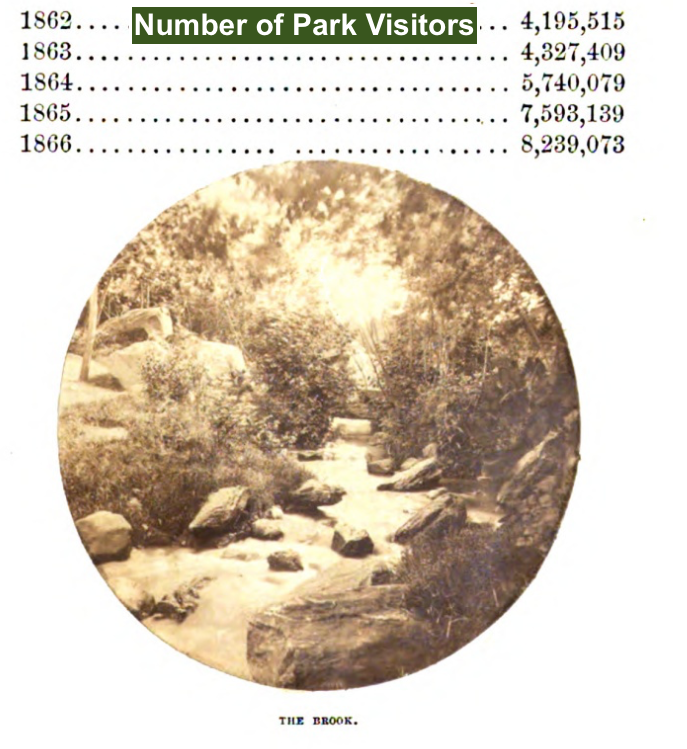
In 1870, the number of visitors reached over 8,400,000. In the month of June alone, 500,000 visited the Park (rounded numbers). After a few years of decline, the number of visitors steadily increased. In 1868, for example, the Park had a total of over 7,000,000 visitors. The categories of visitors was documented as over 3,100,000 pedestrians, 71,000 equestrians, and 1,300,000 vehicles (wagons, carriages, sleighs, etc.). Protecting the flora, fauna, statues, and grounds required a police presence and enforcement of violations of park rules.
It was the custom and practice of the Park Commissioners to appoint to the police force men who previously served as civilian Gate Keepers to the rank of Park Keepers (police authority), Park Keepers to the supervisory rank of Roundsman (equivalent to today’s rank of Sergeant), and thereafter to the ranks of Lieutenant and Captain.
In December 1871, the Park Keepers Force was reduced as a result of the termination of fifty-four Park Keepers. In 1872 and 1873, the Bureau of Police of the Department of Parks, reported a combined, total of 950 arrests for Central Park, and the other parks that they patrolled. The two major categories of arrests were for “Fast Driving,” “Fast Riding,” and Intoxication.

Caption: 1871 – Citizens complained that Park Keepers used surreptitious methods to catch violators of the most menial infractions, such as picking flowers.
In 1883, the Department of Parks, Bureau of Police, reported the following ranks: Chief, Captains, Surgeons, Sergeants, Roundsmen, Patrolmen, Gatekeepers, and Police Tailors. The Commissioners ordered that the Chief rotate men from one park to another on a monthly basis and, in 1884, formed a committee to revise existing regulations for the police force. The revised rules were not completed and published until 1890.
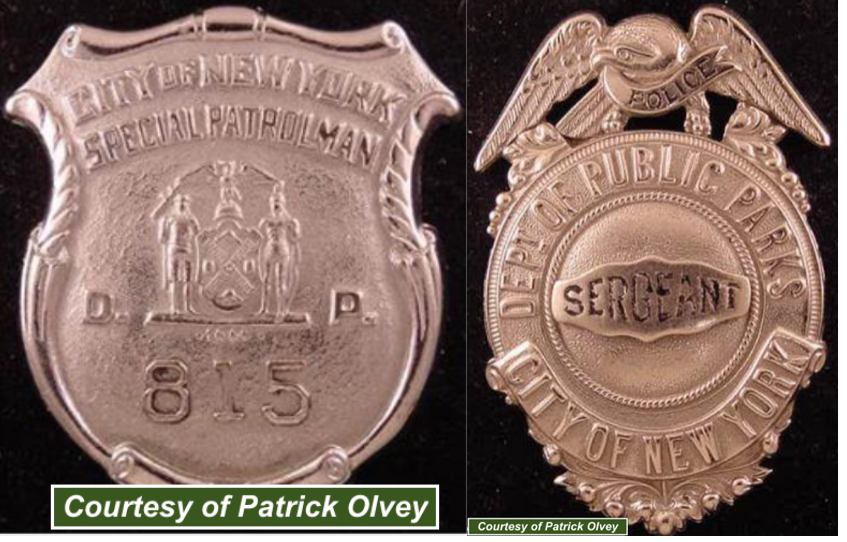
Disciplinary action against members of the force occurred frequently. Failure to patrol post, being off post, on-duty intoxication, failure to report for duty, and similar violations resulted in charges, loss of pay, and in cases of repeated intoxication, termination.
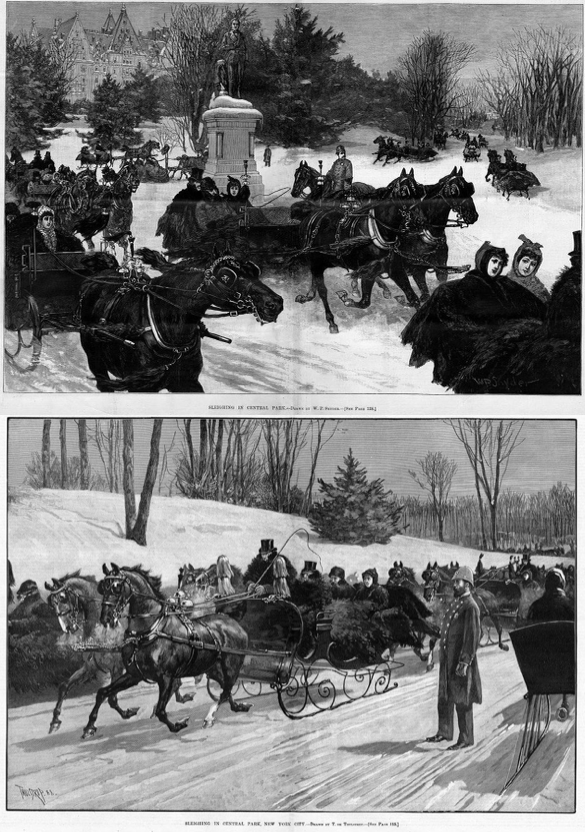
Caption: Top 1888 & Bottom 1886 Winter Sleighing Scenes under the Watchful Eye of the Park Keepers
The Department of Parks, City of Brooklyn established a police force in 1887. In 1889, the force was comprised of one Captain, seven Sergeants, and fifty-nine Patrolmen. The manpower of the force was distributed as follows: Prospect Park (six Sergeants, 47 Patrolmen); Washington Park (one Sergeant, five Patrolmen); City, Tompkins, and Carrol Parks as well as Eastern and Ocean Parkways (one or two patrolmen each).
Watch this video to see the Mounted unit of the CPP showing off their mounts in 1896: https://www.loc.gov/item/00694253
Note that the video is shot from the same perspective as that of the photographer who took the below photo. Look for the monument and the Dakota apartments in the background.
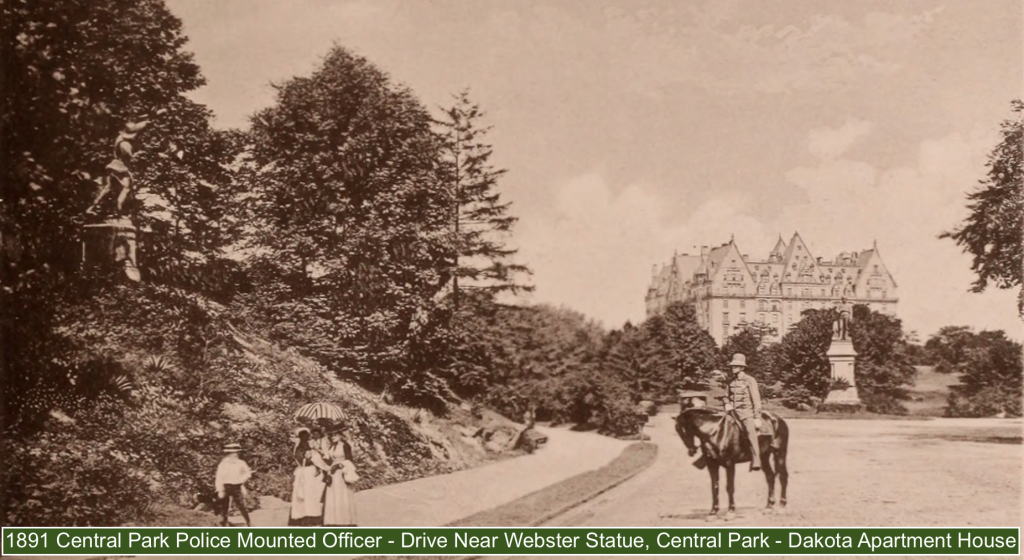
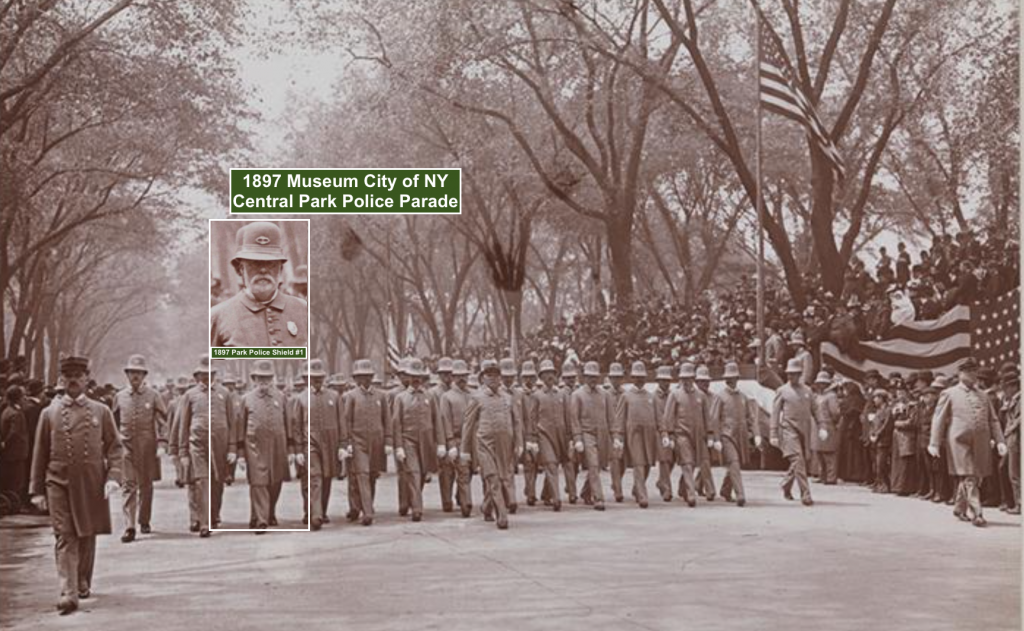
Above Caption – 1898 Parade Central Park Force – Ptl. James Farley, Shield #1 Highlighted
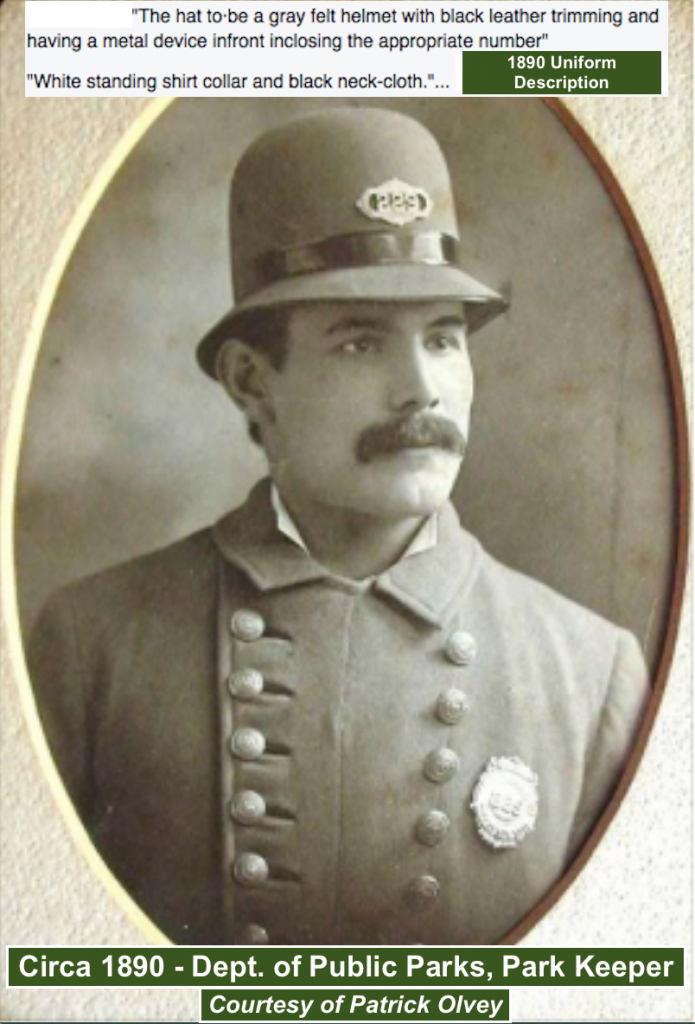
On January 1, 1898, an Act of NYS Legislature, and amendments to the NYC Charter, created the City of Greater New York. This Act expanded New York City from the bounds of Manhattan Island to the five boroughs as we know the City today; Manhattan, The Bronx, Queens, Brooklyn and Staten Island. As a result, the Police Department of the City of Greater New York (PDNY), known today at the NYPD, was created. By combining eighteen departments into one, the largest department in the world, at 6,396 men and women, was created.
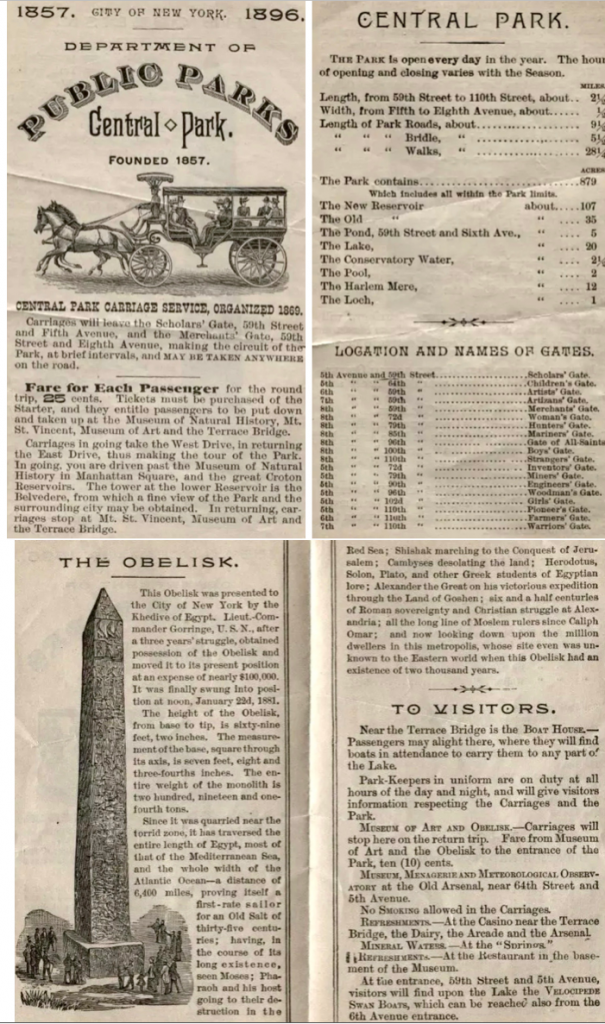
The old New York police force was merged with the City of Brooklyn PD, County of Richmond (Staten Island) PD, Long Island City PD, the New York and Brooklyn Bridge PD, Park Police, Telegraph Force, various smaller PDs and constabularies. As a result, the Park Police, in all boroughs, ceased to exist. Many of the men, but not all, were re-trained and hired by the PDNY.
Post-Consolidation – Policing the Park Was Not a “Walk in the Park”
In 1899, the Central Park Police Station-house at the Arsenal building was designated the 73rd Precinct, PDNY. The PDNY received frequent complaints by park managers, the Park Commissioners, citizens and newspapers regarding the lack of manpower, deteriorating conditions, lawlessness, etc. The complaints continued for years and were addressed, periodically. In 1916, calls were made for a dedicated squad of officers to patrol the parks to be known as the “Park Squad.” The Park Squad was to be modeled after the existing “Traffic Squad,” which focused on traffic control and enforcement. The Park Squad was never formed. The patrol of parks throughout the five borough was then, and remains, the responsibility of the PDNY/NYPD precinct in which the park exists.
Central Park is the exception, with the NYPD’s Central Park Precinct. The NYPD’s abbreviation for the same is, notably, “CPP” (the collar brass abbreviation as well). “CPP,” as noted in the beginning of this story was the abbreviation used, and displayed on the helmet device (plate) of the first officers assigned to the Park in 1856.
What’s the deal with the history of the Central Park Police Force? The CPP Force existed from 1857 and was abolished in 1898. Park Keepers were police officers in the Force, which was shifted from the control of the Park Superintendent to the Park’s Commissioners, the Metropolitan Police District and the NYC Municipal Police. In 1871, the Bureau of Parks also controlled the Park Keepers. The titles of Chief, Captain and Lieutenants were present for a short period during the existence of the Force.
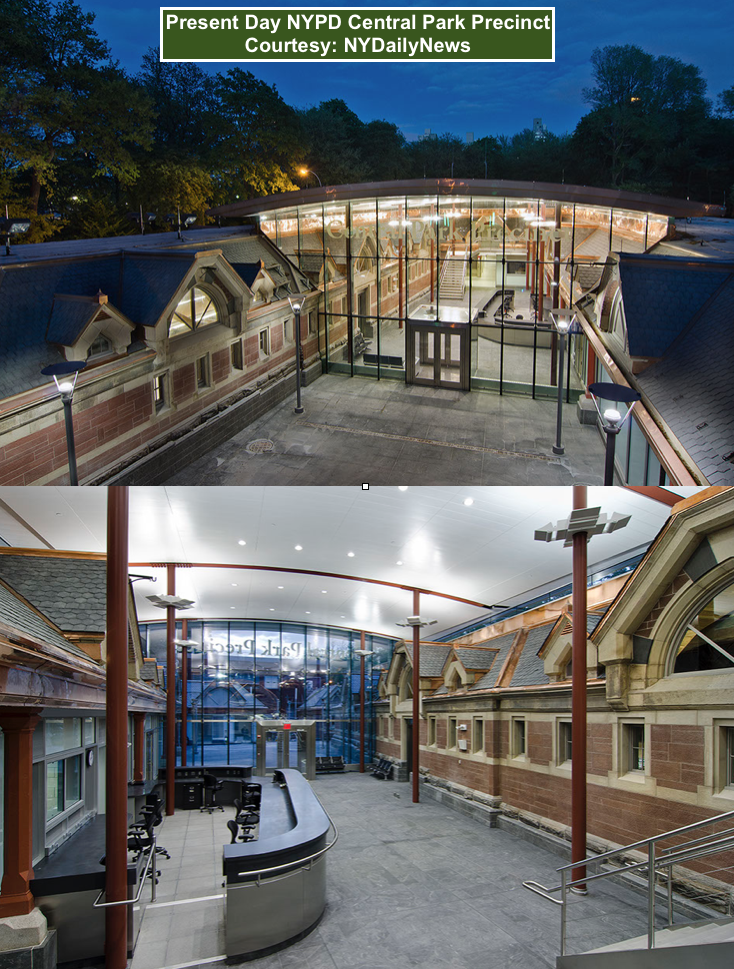
For more information on the history of the development of today’s CPP, visit: http://bcausa.blogspot.com/2012/04/central-park-police-precinct-renewed.html
A Snapshot of the Careers of Two Park Officers
Central Park Keeper Thomas Wallace, Served 1883-1897

Below: 1897 Thomas Wallace Un-cropped
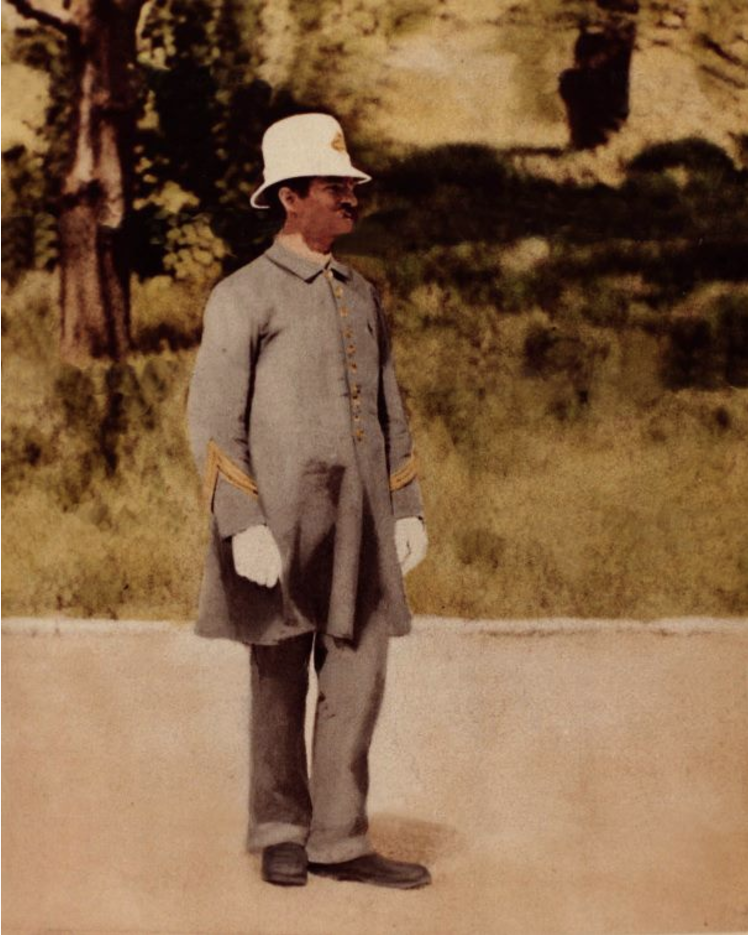
Central Park Keeper & PDNY Patrolman James Farley, Served 1858-1911
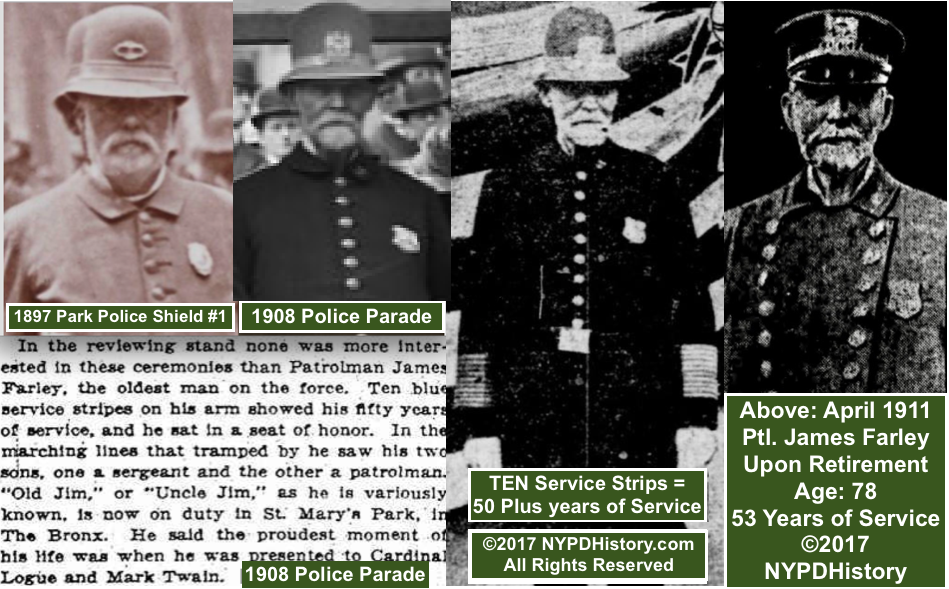
Sources: CPP Park Keeper Farley (MCNY) , PDNY Ptl. Farley at 1908 Police Parade (Lib. of Congress), Ptl. Farley 10 Striper (Facebook NYPD Collectors & History Corner 2014), Ptl. Farley Retires (NY Daily Tribune).
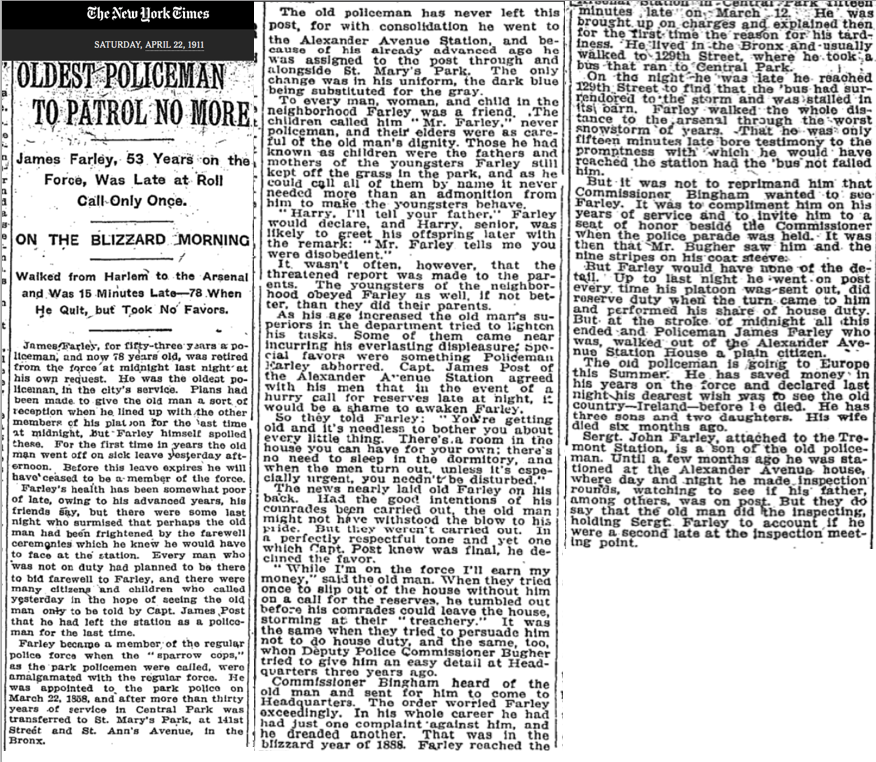
“www.NYPDHistory.com, Where History is Colored with Facts, Not Photoshop.”
Visit our Social Media Platforms!
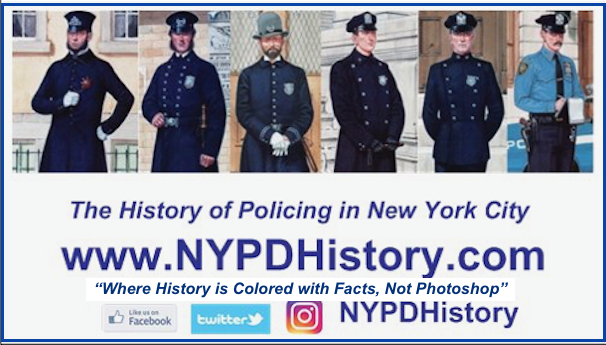

Leave a Reply
You must be logged in to post a comment.